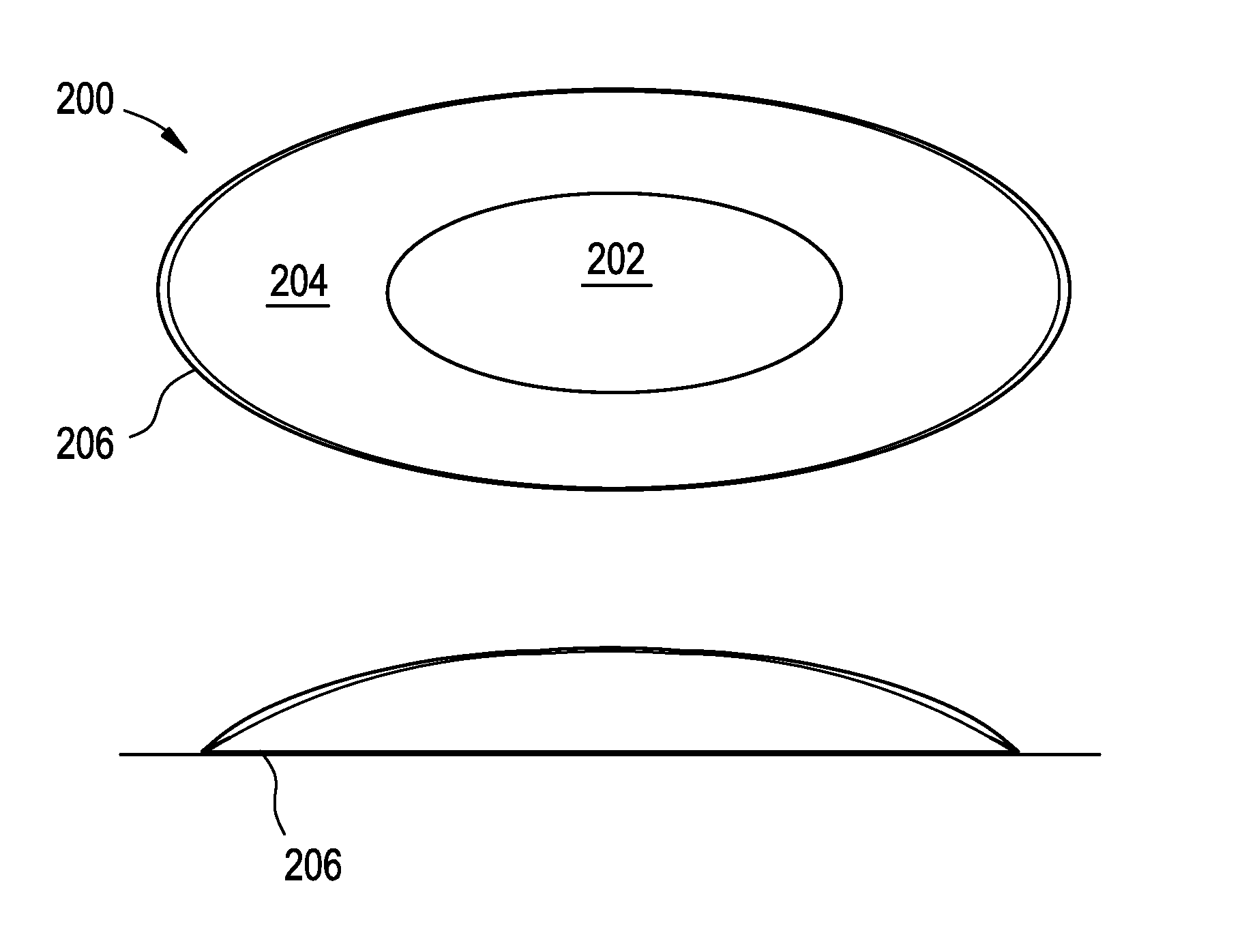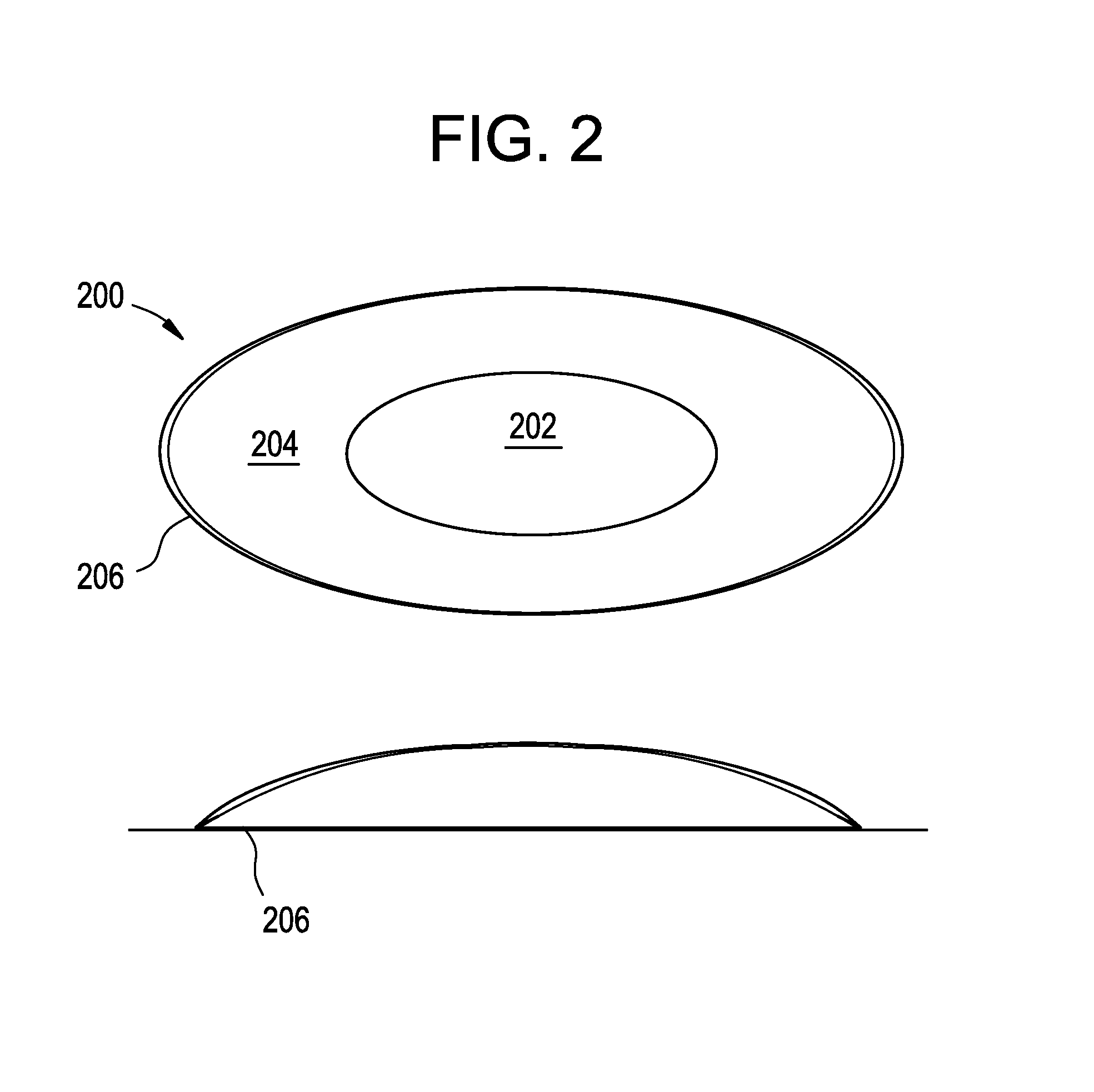Contact lens with improved fitting characteristics
a contact lens and fitting characteristic technology, applied in the field of contact lenses, can solve the problems of individual's vision blurring, optical or refractive defect, general hyperopia, etc., and achieve the effects of improving the rotation and/or translation of the contact lens on the eye, improving the tear exchange, and improving the centrifugal for
- Summary
- Abstract
- Description
- Claims
- Application Information
AI Technical Summary
Benefits of technology
Problems solved by technology
Method used
Image
Examples
Embodiment Construction
[0034]For purposes of the present invention a contact lens is defined by at least three distinct regions. The inner region from which the vision correction is obtained, the outer periphery of the contact lens that provides mechanical stability of the contact lens on eye, and an intermediate region located between the inner region and the outer region used for blending the two aforementioned regions in a smooth manner such that abrupt discontinuities do not occur.
[0035]The inner region or optical zone provides vision correction and is designed for a specific need such as single vision correction, astigmatism vision correction, bi-focal vision correction, multi-focal vision correction, custom correction or any other design that may provide vision correction. The outer periphery or peripheral zone provides for basic fit and stabilization of the contact lens on the eye including, centration and orientation. Orientation stabilization is fundamental when the optical zone includes non-rota...
PUM
 Login to View More
Login to View More Abstract
Description
Claims
Application Information
 Login to View More
Login to View More - R&D
- Intellectual Property
- Life Sciences
- Materials
- Tech Scout
- Unparalleled Data Quality
- Higher Quality Content
- 60% Fewer Hallucinations
Browse by: Latest US Patents, China's latest patents, Technical Efficacy Thesaurus, Application Domain, Technology Topic, Popular Technical Reports.
© 2025 PatSnap. All rights reserved.Legal|Privacy policy|Modern Slavery Act Transparency Statement|Sitemap|About US| Contact US: help@patsnap.com



